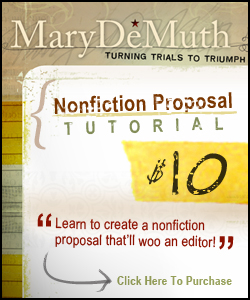It was only when I
removed the sulfurous man that my manuscript started taking shape.
When I wrote my first novel, Crushing
Stone (not yet published), I naïvely thought that I must have
a villain to make the book sing. This story is loosely based on the
life of my great-grandmother whose husband died in a tragic rock quarry
accident, leaving her to care for seven children during the Great
Depression.
In my story, I created an evil
villain who orchestrated the “accident.” Instinctively, I knew
something was wrong, but I couldn’t place my finger on it . . . until I
reread my description of the villain. He sounded like Hitler. Maybe
even worse. More like Satan incarnate. I used words like malevolent
and sweating and conniving and calculating.
He was a liar. He was overweight and greedy, had no regard for his
family or his workers or the town he lived in. Like Mr. Potter from It’s
a Wonderful Life, my villain lived and breathed angry venom.
It was only when I removed the
sulfurous man that my manuscript started taking shape. But then I ran
into other issues. My heroine seemed too good. She bore the weight of
grief beautifully. She smiled. She kept working. She responded in a
godly manner to the horrific experiences around her. She was Pollyanna
of the Depression.
At that time I was having
difficulty connecting well with my kids. I’d become detached from them,
and I couldn’t find my way back. In the midst of my journey, I gave my
heroine the same issue. She became real when I made her disconnect from
the grief of her children, turning into a stoic rock rather than an
approachable mother. Once she had that flaw, the story took on
dimension.
So how do we create real-life
characters without producing stereotypes? How do we humanize villains
and give flaws to our heroes? By observing life.
Keep your eyes open
this week, a pen ready at your side. Jot down notes about folks (just
don’t share them!). Observe the complexities of people. What makes your
best friend happy?
When does your ten-year-old get
angry? Why did that
church worker stray from his marriage? Underneath all this is
motivation.
|
What would motivate your
character to do good? Would it be
a pure motive, or does he want something?
What motivates a mother to
abandon her family by simply walking out the door and never coming
back? By watching others, we get an observer’s view of motivation and
action.
But then it’s time to go deeper.
Become fascinated by people. Ask questions. Be curious (not merely to
give you fodder for stories, but because you’re fascinated by people as
Jesus was). Pray for those who struggle. Messy yourself with folks’
needs and problems. The more you interact with people—loving them,
hearing them, caring for them—the more you’ll be able to flesh out your
characters.
Take notes when you read a
terrific character. I loved Swede in Peace Like a River.
Why? She spoke her mind. She had a sharp wit. She got angry quickly.
She wrote cowboy poetry. She loved her brother. She had a mean streak.
She lived on that page for me. Find characters who sweep you into their
worlds, then ask yourself why. What did the author do to entice you so?
Description? Dialogue? Texture? Temperament?
Creating realistic characters is
not as simple as figuring out learning style, hair color, build, likes,
and dislikes. A character is the representation of a human
being—gloriously flawed, terribly inconsistent, wildly unpredictable.
By becoming a great observer of real people and an astute critic of
great characters in literature, you’ll create characters who jump off
the page—not just villains like Hitler or heroines like Pollyanna.

|








